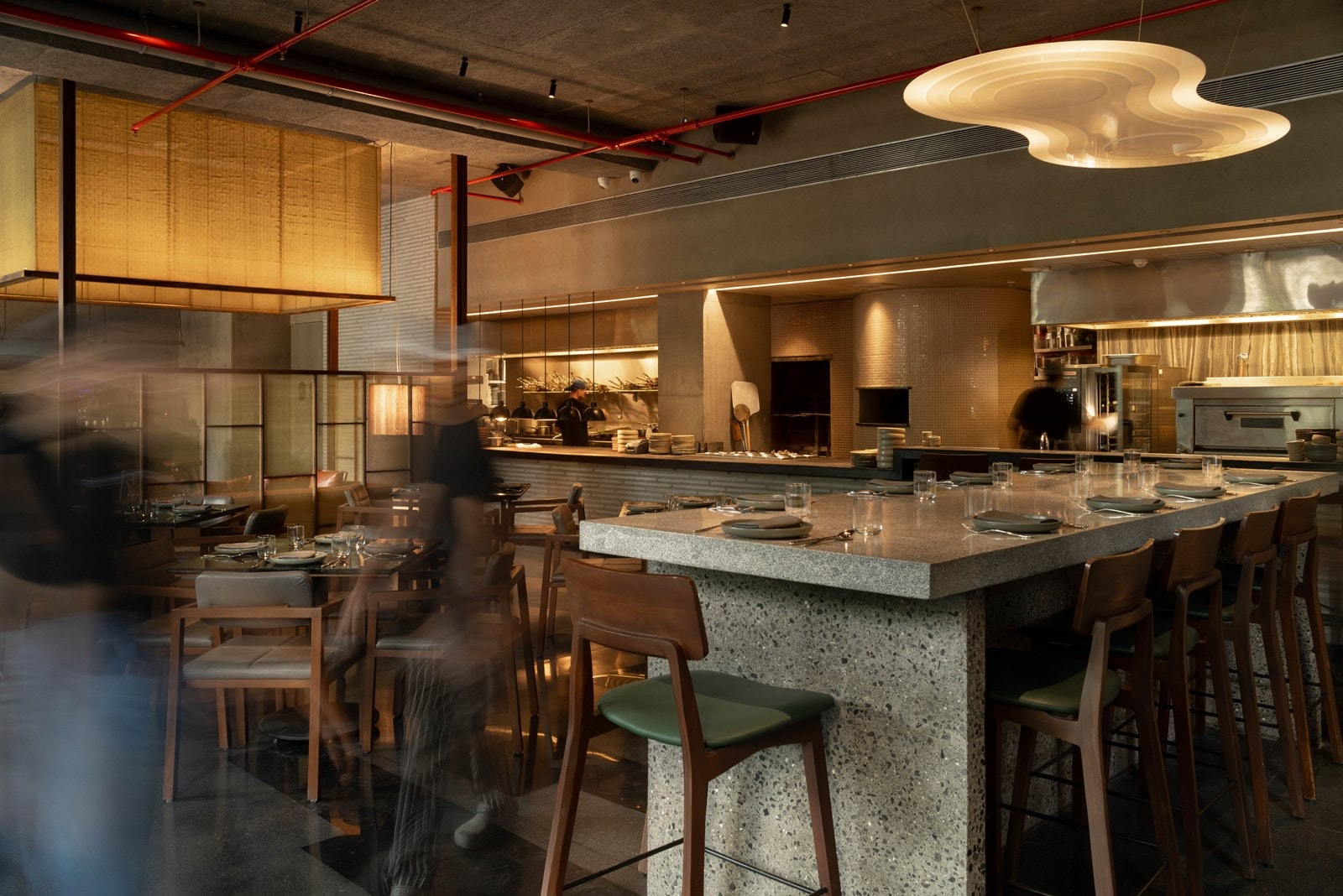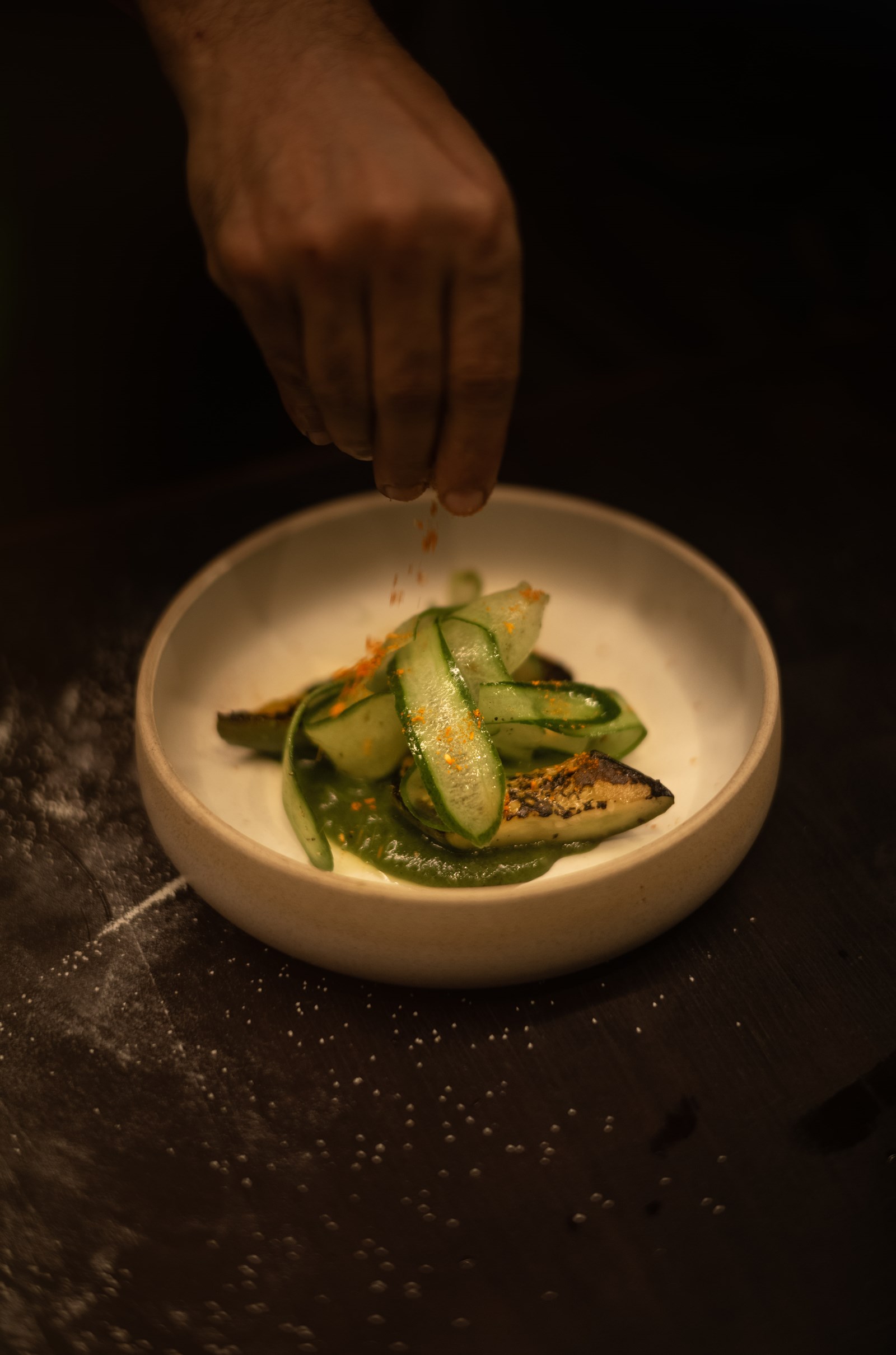‘Ours is a business of making corrections or tweaks all the time’, says chef Rahul Akerkar
From creating an iconic restaurant like Indigo 25 years ago to launching Ode a little over three months ago in Mumbai, chef Akerkar's culinary voyage has been one of adventure, innovation and attention to detail
 The unforeseen challenges posed by the COVID-19 pandemic forced its closure within two years of its opening. (Source: PR Handout)
The unforeseen challenges posed by the COVID-19 pandemic forced its closure within two years of its opening. (Source: PR Handout)Chef Rahul Akerkar is undoubtedly one of the most celebrated chefs in India, renowned for pioneering European fine dining and revolutionising the gastronomic scene. His journey has been nothing short of remarkable. In 1999, Akerkar launched Indigo in a restored colonial bungalow in Colaba. It soon gained iconic status as one of the first standalone restaurants to serve top-notch European cuisine outside of luxury hotels, boasted a three-month waiting period and hosted the likes of David Cameron, Angelina Jolie, Salman Rushdie and The Rolling Stones. It also ranked 75th on the World’s 50 Best Restaurants list in 2007 and 28th on Asia’s 50 Best Restaurants list in 2013. Akerkar and Indigo became inseparable, making his departure from the restaurant, a bittersweet chapter in his career. He returned with Qualia in 2019, another fine-dining establishment that swiftly gained recognition, earning a coveted spot on the 50 Best Discovery list by World’s 50 Best Restaurants in August 2021. However, the unforeseen challenges posed by the COVID-19 pandemic forced its closure within two years of its opening.
Akerkar moved to Goa to build a life there, but fate intervened, leading him back to Mumbai where he launched Ode. A collaboration with Aditya Birla Group, he calls it his culinary love letter to Mumbai that sees a melding of his Maharashtrian and European heritage.
Designed by architect Samira Rathod, the 3,000 sq ft space exudes warmth and simplicity. Among the highlights is a black-and-white photo by filmmaker-photographer Sunhil Sippy, featuring the expansive sea of people during Ganpati visarjan. With a community table, a cosy lounge area adjacent to the bar, and a large open kitchen running parallel to the dining area, Ode offers “food that triggers memories”. Expect a cucumber salad that sits with a kiwi salsa and peanut thecha, and pork ribs flavoured with khandeshi kala masala. At Ode, we meet Akerkar, 65, in April, who delves into his myriad experiences and culinary adventures. Excerpts:
Q. Ode has garnered both praise and criticism from food writers. How do you react to feedback?
Ours is a business of making corrections or tweaks all the time. It’s like rolling a ball down a hill; if you don’t steer it constantly down the straight and narrow, it’ll slowly veer off course. Much like missing the forest for the trees, as a chef and restaurateur, you must look at your restaurant as a whole and not overreact to every individual incident of criticism or praise. There’s a Latin phrase, ‘De gustibus non disputandum est’, meaning there’s no dispute in matters of taste. There’s no right or wrong. Some will appreciate your work, others won’t. If you are going to let your ego rule, you are not going to run a successful eatery because people have different tastes and expectations. As chef-owner, you must listen to your customer and hear what they have to say, look for patterns, address them, and then make changes gradually.
 Ode interiors. (Photo courtesy: Special Arrangement)
Ode interiors. (Photo courtesy: Special Arrangement)
Q. The kitchen is at the centre of Ode. Was it a conscious decision?
It adds a layer of transparency. Cooks can immediately see the impact of their efforts. When guests take that first bite and a smile lights up their faces, it’s incredibly rewarding. Conversely, any mistakes are also immediately apparent. This heightened visibility encourages everyone to be more focused, ensuring cleanliness, efficiency and a mindful approach to food preparation.
Q. You’re credited with transforming Mumbai’s dining culture and introducing fine dining to the city. What were those early days like?
It’s very flattering to say that I helped herald the fine dining concept in India, at least in the standalone space, but Indigo was never fine dining. It was more aligned with casual dining but with a strong emphasis on meticulous attention to detail. It is as if mediocrity is the average restaurant, and anything where anyone pays any attention to it is called fine dining.
Q. When you sold your stake in Indigo in early 2015, how did you make your peace with it?
When you build something that is so inextricably linked to your own name and fame, where you and the restaurant become synonymous with one another, it is tough to walk away from that. Much like a home, which is not just defined by its walls but by the memories and experiences created within it, restaurants are also a labour of love and passion. Indigo had become more about the “churn” instead of what I loved doing, which was running a restaurant, feeding people, connecting people through food and the whole hospitality aspect of it. Ironically, once I went through it, I wished I had done it two years earlier.
 Burnt cucumber. (Photo courtesy: Special Arrangement)
Burnt cucumber. (Photo courtesy: Special Arrangement)
Q. How does the post-pandemic food landscape of Mumbai differ from the pre-pandemic era?
There was a lot of mediocrity that we were dealing with pre-pandemic. We had reached a point where everyone was kind of rehashing the same stuff — truffle fries, edamame dumplings, etc. Post-COVID, there’s been a refinement. There is a step forward towards quality, value, and uniqueness in terms of concept. I think a lot of interesting restaurants are opening which are also chef-driven, which is great for the industry.
Q. How does your lineage – mixed Maharashtrian/Indian and European/American heritage – reflect in your food?
Growing up, our meals at home were a fusion of various cuisines, blending both Indian and Western flavours and cooking techniques. It was common for us to enjoy an Indian lunch followed by Western-style dinner, with leftovers of both combined for lunch the following day. So my palate is used to all these different flavours and cooking techniques and over time, I have come to accept it, embrace it and play around with it.
Q. Tell us about chefs, restauranteurs and books about food that have helped you on this journey.
I am an avid reader, and two of my favourite books are The Art of the Restaurateur (2012) by Nicholas Lander and Setting the Table (2006) by Danny Meyer. Chef Michael Romano, former chef of Union Square Cafe in New York and current culinary director for Union Square Hospitality Group, is someone I deeply admire and consider my mentor. His contributions to the culinary world, alongside figures like Alice Waters from Chez Panisse, have been truly transformative. Their emphasis on attention to detail has revolutionised the way people approach food and hospitality.
Q. Can you tell us about your memoir with Harper Collins.
I had finished writing it during COVID-19. It’s my story with food, set against the backdrop of the Indian restaurant scene. It will spotlight how I built the company (DeGustibus Hospitality), and how I lost it.
Q. You haven’t been afraid of starting all over again. What does it take to make a fresh start?
Foolishness. I love what I do. When somebody comes up to me at the end of the meal and says, ‘Thanks, that was a great meal’ – I live for that.
- 01
- 02
- 03
- 04
- 05






























